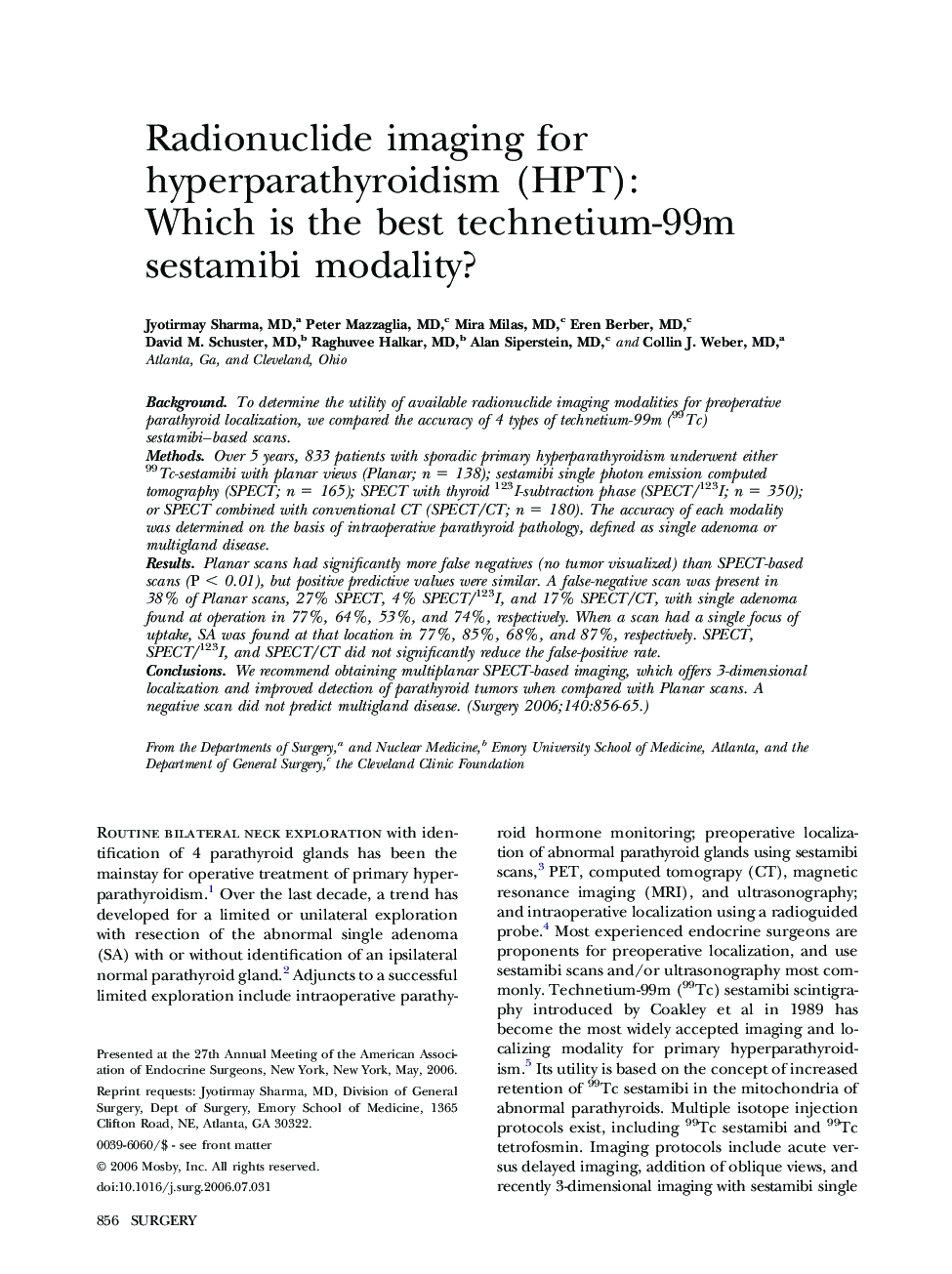| Article ID | Journal | Published Year | Pages | File Type |
|---|---|---|---|---|
| 4310448 | Surgery | 2006 | 10 Pages |
BackgroundTo determine the utility of available radionuclide imaging modalities for preoperative parathyroid localization, we compared the accuracy of 4 types of technetium-99m (99Tc) sestamibi–based scans.MethodsOver 5 years, 833 patients with sporadic primary hyperparathyroidism underwent either 99Tc-sestamibi with planar views (Planar; n = 138); sestamibi single photon emission computed tomography (SPECT; n = 165); SPECT with thyroid 123I-subtraction phase (SPECT/123I; n = 350); or SPECT combined with conventional CT (SPECT/CT; n = 180). The accuracy of each modality was determined on the basis of intraoperative parathyroid pathology, defined as single adenoma or multigland disease.ResultsPlanar scans had significantly more false negatives (no tumor visualized) than SPECT-based scans (P < 0.01), but positive predictive values were similar. A false-negative scan was present in 38% of Planar scans, 27% SPECT, 4% SPECT/123I, and 17% SPECT/CT, with single adenoma found at operation in 77%, 64%, 53%, and 74%, respectively. When a scan had a single focus of uptake, SA was found at that location in 77%, 85%, 68%, and 87%, respectively. SPECT, SPECT/123I, and SPECT/CT did not significantly reduce the false-positive rate.ConclusionsWe recommend obtaining multiplanar SPECT-based imaging, which offers 3-dimensional localization and improved detection of parathyroid tumors when compared with Planar scans. A negative scan did not predict multigland disease.
